Educators Exhibit
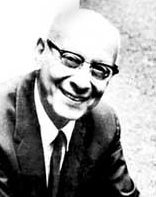
Bruno Bettelheim (1903-1990)
Bruno Bettelheim was an American developmental psychologist. He earned his Ph. D. from the University of Vienna in 1938. Before immigrating to the United States in 1939 he was a prisoner of the Nazi concentration camps. He was a professor of psychology at the University of Chicago and the director of the Chicago-based Orthogenic School for Children working with children that had emotional problems. Bettelheim placed a special emphasis on autism. He thought that autistic children had been raised in unstimulating environments that caused underdeveloped language and motor skills. In the 1950's, Bettelheim also believed that autism was caused by "refrigerator moms" or mothers who were cold and unaffectionate towards their children.
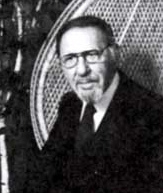
Samuel A. Kirk (1904-1996)
Samuel A. Kirk is considered an influential individual in the history of special education. He earned his bachelors and masters degrees in psychology from the University of Chicago and a Ph.D. in physiological and psychology at the University of Michigan. Kirk began working with disabled children at the Oaks School in Chicago in 1929 and also worked at the Wayne County Training School in Michigan. At the University of Illinois, Kirk helped to develop a special education program for undergraduates and graduate students and was the Director of the Institute for Research on Exceptional Children. Kirk was a leading advocate for the passage of federal legislation establishing contemporary special education laws. The 1969 Learning Disabilities Act can be contributed to Kirk's work with the learning disabled. He was the first recipient of the International Award in Mental Retardation presented by the Joseph P. Kennedy Jr. Foundation. In 1964 Kirk was appointed the director of the Division of Handicapped Children and Youth under what is now the U.S. Department of Education.
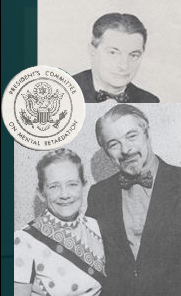
Gunnar Dybwad (1909-2001)
Dr. Gunnar Dybwad was a very active advocate for the rights of the disabled. He earned his law degree at the University of Halle, Germany, and graduated from the New York School of Social Work in 1939. One of the most outstanding accomplishments of Dr. Dybwad was his persuasion of the Pennsylvania Association for Retarded Children to bring about a lawsuit on behalf of retarded children. PARC versus Pennsylvania resulted in the establishment of rights for disabled children to access free and equal public education. Dr. Dybwad and his wife were also influential in the adoption of the "United Nations Declaration on the Rights of Mentally Retarded Persons." He was the Executive Director of the National Association for Retarded Citizens for nine years, Co-Director of the Mental Retardation Project of the International Union for Child Welfare with his wife, served on the Presidents Panel on Mental Retardation for President John F. Kennedy and on the President's Committee on Mental Retardation for Presidents Johnson, Nixon, Regan, Ford, Carter, Bush, and Clinton. Dr. Dybwad was also the recipient of the Kennedy Foundation Award. Starting in 1967, Dybwad taught at Brandeis University as the first director of the Starr Center on Mental Retardation at the Heller Graduate School for over thirty years and also taught special education at Syracuse University. In 1978, Dr. Dybwad became the president of Inclusion International, an organization dedicated to promoting equality, inclusion and opportunity for people with intellectual disabilities.
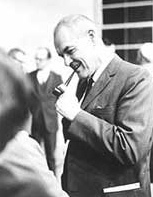
Newell C. Kephart (1911-1973)
Newell Kephart earned his B.A. and M.A. from the University of Denver and his Ph.D. from the State University of Iowa. An educator and psychologist, Kephart was active in the special education field, held the position of Director of the Glenn Haven Achievement Center for Children, and was the consulting editor for the Merrill Slow Learner Series. His best selling book The Slow Learner in the Classroom, presented a systematic method for the identification of learning difficulties.
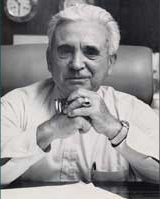
Dr. Henry Viscardi (1912-2004)
Dr. Henry Viscardi Jr. was born disabled but went on to study at Fordham University and St. John's Law School. He founded Abilities Inc. in 1952 that was created as a disability employment agency. Added later were vocational training programs and a research center. In 1962 the Henry Viscardi School was opened for pre-K through 12th grade school children with physical and medical disabilities. Viscardi served as a disabilities advisor to President Franklin D. Roosevelt and to every other president through Jimmy Carter, a total of eight presidents.
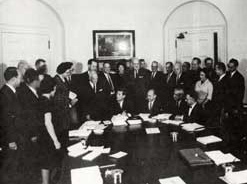
Dr. Henry Viscardi (1912-2004)
Dr. Henry Viscardi Jr. was born disabled but went on to study at Fordham University and St. John's Law School. He founded Abilities Inc. in 1952 that was created as a disability employment agency. Added later were vocational training programs and a research center. In 1962 the Henry Viscardi School was opened for pre-K through 12th grade school children with physical and medical disabilities. Viscardi served as a disabilities advisor to President Franklin D. Roosevelt and to every other president through Jimmy Carter, a total of eight presidents.
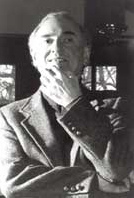
Wolf Wolfensberger (1934-present)
Wolf Wolfensberger was born in Germany and immigrated to the United States in 1950. He received his Ph D. in psychology with a specialization in mental retardation at what is now known as Vanderbilt University. Wolfensberger has been a professor at the School for Education at Syracuse University since 1973. An advocate and the creator of programs for the deinstitutionalization of the developmentally disabled, he has been credited with the term "Citizen Advocacy." Programs include the theory of Social Role Valorization and Normalization among others. Social Role Valorization attempts to explain (and prevent) how some people who are "socially devalued" in some way (perhaps because of such conditions as being old, disabled, mentally ill or poor) are excluded from valued social roles that form the basis of our participation in ordinary community life. His theory on normalization is based on the principle that people will behave "normally" when they are placed into "normal" settings. He has also worked in child assessment, working with families in planning their disabled child's future including education.
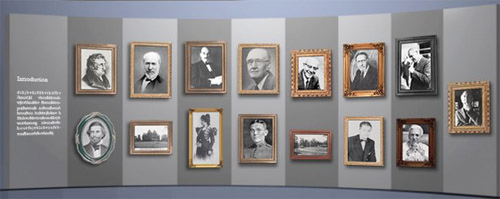
Educators
The education of individuals with intellectual disabilities has a long history. There have been significant contributions through the years by doctors, teachers, psychologists, parents and advocates for individuals with disabilities. The recognition that "idiots and imbeciles" could benefit from education has evolved over the years to the current practice of inclusion of individuals with disabilities into "regular" classrooms alongside their contemporaries. The goals of education have also evolved from the mere tolerance for interaction with others to assuming a place in an accepting society. Here are a few individuals who have sought to educate individuals with disabilities as well as the society they live in.
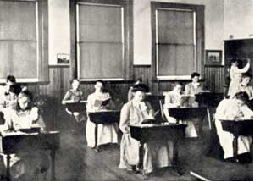
Girls School Room Laconic
The education of individuals with intellectual disabilities has a long history. There have been significant contributions through the years by doctors, teachers, psychologists, parents and advocates for individuals with disabilities. The recognition that "idiots and imbeciles" could benefit from education has evolved over the years to the current practice of inclusion of individuals with disabilities into "regular" classrooms alongside their contemporaries. The goals of education have also evolved from the mere tolerance for interaction with others to assuming a place in an accepting society. Here are a few individuals who have sought to educate individuals with disabilities as well as the society they live in.
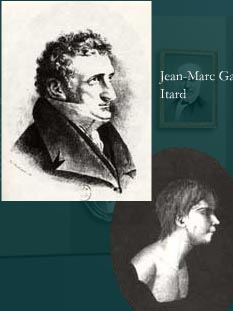
Jean-Marc Gaspard Itard (1775-1838)
Jean Itard is best known for his work with Victor, the "Wild Boy of Aveyron," who was found living in the woods of France. Itard attempted to instruct the "feral child" in order for the boy to survive in 19th century France. He had five areas of instruction with the goal of being able to train Victor: endear him to social life, awaken his nervous sensitivity, extend his sphere of influence, teach him speech, and the use of his mind to acquire things to meet his physical needs. Other educators of the mentally disabled had been influenced by Itard's methods of instruction including his pupil Edouard Seguin. He is credited with the beginnings of modern special education.
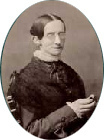
Samuel Gridley Howe (1801-1876)
Howe attended Harvard Medical School after graduating from Brown University, but left in 1824 to fight for independence in Greece. In 1831 he visited Paris to study medical techniques for the training of the blind and was involved in the Polish Insurrection in Prussia. In 1832 he established the Perkins School for the Blind in Boston and became the countries leading expert. He married Julia Ward in 1843 and, as well as being members of the Free Soil Party and Anti-Slavery Society, he and his wife edited the Abolitionist newspaper Commonwealth from 1851-53. Howe established the Massachusetts School for Idiotic Children and Youth in 1849. In 1865 Howe became chairman of the Massachusetts Board of State Charities and over the next nine years strenuously lobbied Congress to pass legislation to provide more aid for the education of the blind, deaf and mentally ill. He was probably best known for his work with Laura Bridgman, an 8 year old blind, deaf-mute girl who he was able to teach to the point where she could communicate with her teachers after admission to the school in 1837. She became a very popular attraction and was in the spotlight until Helen Keller's popularity would supersede hers.
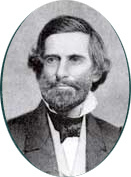
Samuel Gridley Howe (1801-1876)
Howe attended Harvard Medical School after graduating from Brown University, but left in 1824 to fight for independence in Greece. In 1831 he visited Paris to study medical techniques for the training of the blind and was involved in the Polish Insurrection in Prussia. In 1832 he established the Perkins School for the Blind in Boston and became the countries leading expert. He married Julia Ward in 1843 and, as well as being members of the Free Soil Party and Anti-Slavery Society, he and his wife edited the Abolitionist newspaper Commonwealth from 1851-53. Howe established the Massachusetts School for Idiotic Children and Youth in 1849. In 1865 Howe became chairman of the Massachusetts Board of State Charities and over the next nine years strenuously lobbied Congress to pass legislation to provide more aid for the education of the blind, deaf and mentally ill. He was probably best known for his work with Laura Bridgman, an 8 year old blind, deaf-mute girl who he was able to teach to the point where she could communicate with her teachers after admission to the school in 1837. She became a very popular attraction and was in the spotlight until Helen Keller's popularity would supersede hers.
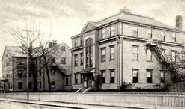
Samuel Gridley Howe (1801-1876)
Howe attended Harvard Medical School after graduating from Brown University, but left in 1824 to fight for independence in Greece. In 1831 he visited Paris to study medical techniques for the training of the blind and was involved in the Polish Insurrection in Prussia. In 1832 he established the Perkins School for the Blind in Boston and became the countries leading expert. He married Julia Ward in 1843 and, as well as being members of the Free Soil Party and Anti-Slavery Society, he and his wife edited the Abolitionist newspaper Commonwealth from 1851-53. Howe established the Massachusetts School for Idiotic Children and Youth in 1849. In 1865 Howe became chairman of the Massachusetts Board of State Charities and over the next nine years strenuously lobbied Congress to pass legislation to provide more aid for the education of the blind, deaf and mentally ill. He was probably best known for his work with Laura Bridgman, an 8 year old blind, deaf-mute girl who he was able to teach to the point where she could communicate with her teachers after admission to the school in 1837. She became a very popular attraction and was in the spotlight until Helen Keller's popularity would supersede hers.
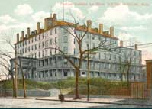
Samuel Gridley Howe (1801-1876)
Howe attended Harvard Medical School after graduating from Brown University, but left in 1824 to fight for independence in Greece. In 1831 he visited Paris to study medical techniques for the training of the blind and was involved in the Polish Insurrection in Prussia. In 1832 he established the Perkins School for the Blind in Boston and became the countries leading expert. He married Julia Ward in 1843 and, as well as being members of the Free Soil Party and Anti-Slavery Society, he and his wife edited the Abolitionist newspaper Commonwealth from 1851-53. Howe established the Massachusetts School for Idiotic Children and Youth in 1849. In 1865 Howe became chairman of the Massachusetts Board of State Charities and over the next nine years strenuously lobbied Congress to pass legislation to provide more aid for the education of the blind, deaf and mentally ill. He was probably best known for his work with Laura Bridgman, an 8 year old blind, deaf-mute girl who he was able to teach to the point where she could communicate with her teachers after admission to the school in 1837. She became a very popular attraction and was in the spotlight until Helen Keller's popularity would supersede hers.
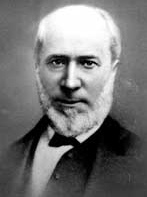
Edouard Seguin (1812-1880)
Edouard Seguin studied medicine and surgery under Jean Itard who also persuaded Seguin to dedicate himself to explore the causes of idiocy as well as the training of idiots. In 1839 Seguin opened the first school for the retarded in the world where he developed his sensory training method. In 1850 Seguin immigrated to the United States and continued his work by establishing other teaching centers for the mentally retarded. He published "Idiocy: and its Treatment by the Physiological Method" in 1866 which he applied at the Seguin Physiological School in New York City. Seguin became the first president of the Association of Medical Officers of American Institutions for Idiotic and Feebleminded Persons, which would later be known as the American Association on Mental Retardation.
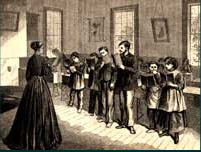
Edouard Seguin (1812-1880)
Edouard Seguin studied medicine and surgery under Jean Itard who also persuaded Seguin to dedicate himself to explore the causes of idiocy as well as the training of idiots. In 1839 Seguin opened the first school for the retarded in the world where he developed his sensory training method. In 1850 Seguin immigrated to the United States and continued his work by establishing other teaching centers for the mentally retarded. He published "Idiocy: and its Treatment by the Physiological Method" in 1866 which he applied at the Seguin Physiological School in New York City. Seguin became the first president of the Association of Medical Officers of American Institutions for Idiotic and Feebleminded Persons, which would later be known as the American Association on Mental Retardation.
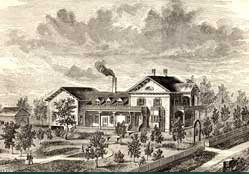
Hervey Backus Wilbur (1820-1883)
Hervey Backus Wilbur organized the first school for idiots at his home in Barre, Massachusetts in 1848. Wilbur developed a system for the education of the feebleminded that was eventually adopted in several similar institutions across the United States. He was persuaded to go to New York and help establish the Syracuse State School and later influenced the Newark State School. Wilbur was superintendent of the New York Asylum from 1851 until his death. Dr. Wilbur believed that those considered feebleminded could be taught and trained for assimilation back into the community instead of being segregated from the larger society.
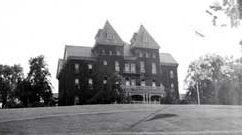
Hervey Backus Wilbur (1820-1883)
Hervey Backus Wilbur organized the first school for idiots at his home in Barre, Massachusetts in 1848. Wilbur developed a system for the education of the feebleminded that was eventually adopted in several similar institutions across the United States. He was persuaded to go to New York and help establish the Syracuse State School and later influenced the Newark State School. Wilbur was superintendent of the New York Asylum from 1851 until his death. Dr. Wilbur believed that those considered feebleminded could be taught and trained for assimilation back into the community instead of being segregated from the larger society.
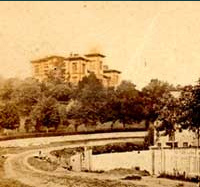
Hervey Backus Wilbur (1820-1883)
Hervey Backus Wilbur organized the first school for idiots at his home in Barre, Massachusetts in 1848. Wilbur developed a system for the education of the feebleminded that was eventually adopted in several similar institutions across the United States. He was persuaded to go to New York and help establish the Syracuse State School and later influenced the Newark State School. Wilbur was superintendent of the New York Asylum from 1851 until his death. Dr. Wilbur believed that those considered feebleminded could be taught and trained for assimilation back into the community instead of being segregated from the larger society.
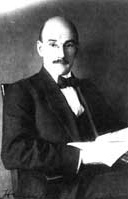
Henry Herbert Goddard (1866-1957)
Henry Herbert Goddard was educated at Haverford College in Pennsylvania and earned his Ph.D. from Clark University in 1899. Goddard is credited with bringing the Binet-Simon intelligence scale to the United States and translating the IQ test into English. He also helped to draft the first legislation mandating special education in the U.S. In 1906 Goddard was hired to conduct research on the genetic sources of feeble-mindedness at the Vineland Training School. His published work includes the 1912 best-selling study Kallikak Family: A Study in the Heredity of Feeble-mindedness. The study concluded that feeble-mindedness was an inheritable trait passed from generation to generation. Later Goddard went on to regret many of the conclusions he came to stating that he was mistaken regarding the ability of morons to be educated and raise children.
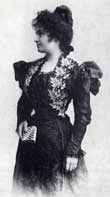
Maria Montessori (1870-1952)
Maria Montessori was the first Italian women to be granted a degree of doctor of medicine in 1896. From her experience at the psychiatric clinic at the University of Rome, Montessori became interested in the education of special needs children. Montessori insisted that the challenge with mentally defective children was more educational than medical. Impressed with her work, the Government established an Institution to train teachers for defective children. She was the Director of the Orthophrenic Institute in Rome from 1898 until 1900. In 1907 she opened her first Casa dei Bambini or "House of Children" where the development of her successful education methods for learning disabled children came into fruition. Her method consisted of developmental stages in which children would be more apt and willing to learn. She would go on to open several schools based on her methods throughout the world including the United States. Two of her greatest influences were Jean Itard and Edouard Seguin. Maria Montessori was nominated for the Nobel Peace Prize in 1949, 1950, and 1951.

Maria Montessori (1870-1952)
Maria Montessori was the first Italian women to be granted a degree of doctor of medicine in 1896. From her experience at the psychiatric clinic at the University of Rome, Montessori became interested in the education of special needs children. Montessori insisted that the challenge with mentally defective children was more educational than medical. Impressed with her work, the Government established an Institution to train teachers for defective children. She was the Director of the Orthophrenic Institute in Rome from 1898 until 1900. In 1907 she opened her first Casa dei Bambini or "House of Children" where the development of her successful education methods for learning disabled children came into fruition. Her method consisted of developmental stages in which children would be more apt and willing to learn. She would go on to open several schools based on her methods throughout the world including the United States. Two of her greatest influences were Jean Itard and Edouard Seguin. Maria Montessori was nominated for the Nobel Peace Prize in 1949, 1950, and 1951.
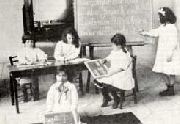
Maria Montessori (1870-1952)
Maria Montessori was the first Italian women to be granted a degree of doctor of medicine in 1896. From her experience at the psychiatric clinic at the University of Rome, Montessori became interested in the education of special needs children. Montessori insisted that the challenge with mentally defective children was more educational than medical. Impressed with her work, the Government established an Institution to train teachers for defective children. She was the Director of the Orthophrenic Institute in Rome from 1898 until 1900. In 1907 she opened her first Casa dei Bambini or "House of Children" where the development of her successful education methods for learning disabled children came into fruition. Her method consisted of developmental stages in which children would be more apt and willing to learn. She would go on to open several schools based on her methods throughout the world including the United States. Two of her greatest influences were Jean Itard and Edouard Seguin. Maria Montessori was nominated for the Nobel Peace Prize in 1949, 1950, and 1951.
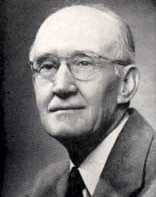
Dr. J.E. Wallace Wallin (1876-1969)
John Edward Wallace Wallin received his Ph.D. from Yale University in 1901. He was influential in establishing psychological and special education departments at the New Jersey Village for Epileptics and other public institutions in the United States including universities and public schools. Wallin was the head of the special education department in the Delaware public schools and author of several special education textbooks that were widely read. He taught courses on the education of disabled children at Johns Hopkins, Virginia, Michigan, Princeton, California and Duke Universities.
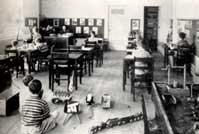
Dr. J.E. Wallace Wallin (1876-1969)
John Edward Wallace Wallin received his Ph.D. from Yale University in 1901. He was influential in establishing psychological and special education departments at the New Jersey Village for Epileptics and other public institutions in the United States including universities and public schools. Wallin was the head of the special education department in the Delaware public schools and author of several special education textbooks that were widely read. He taught courses on the education of disabled children at Johns Hopkins, Virginia, Michigan, Princeton, California and Duke Universities.
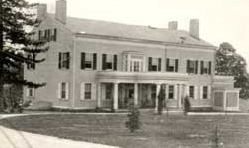
Dr. J.E. Wallace Wallin (1876-1969)
John Edward Wallace Wallin received his Ph.D. from Yale University in 1901. He was influential in establishing psychological and special education departments at the New Jersey Village for Epileptics and other public institutions in the United States including universities and public schools. Wallin was the head of the special education department in the Delaware public schools and author of several special education textbooks that were widely read. He taught courses on the education of disabled children at Johns Hopkins, Virginia, Michigan, Princeton, California and Duke Universities.
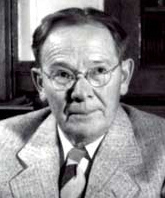
Lewis M. Terman (1877-1956)
Lewis Terman is best known for his perfection of the Binet-Simon IQ test for American populations called the Stanford-Binet scale. Terman received his B.A. and M.A. from Indiana University and earned his Ph.D. in psychology from Clark University. He believed that feebleminded children should be separated into special classes that focused on "concrete and practical" instruction to become efficient workers. Lewis Terman became head of the Stanford Psychology Department in 1922 until he retired in 1942.
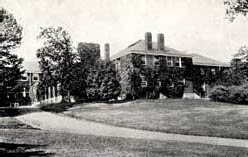
Walter E. Fernald (1859-1924)
Walter E. Fernald was the first superintendent at the Massachusetts School for Idiotic Children in 1887 that would later change its name in his honor in 1925. He was an adherent of Edouard Seguin and implemented many of his teaching methods. Fernald developed a 10 point scale in order to determine a more individualistic training approach to teach mentally disabled students. He also initiated an after-care program for patients discharged into the community to determine their adaptability. Fernald was a professor of mental disease at Tufts College and lectured about the mental diseases of children at the Harvard Graduate School of Education.

